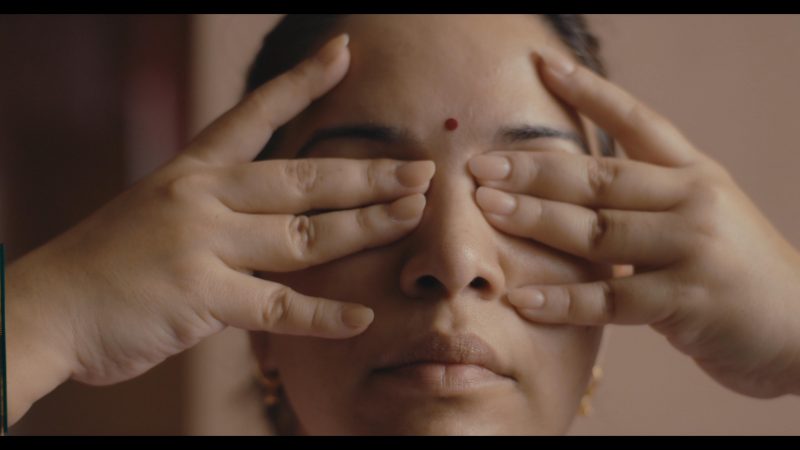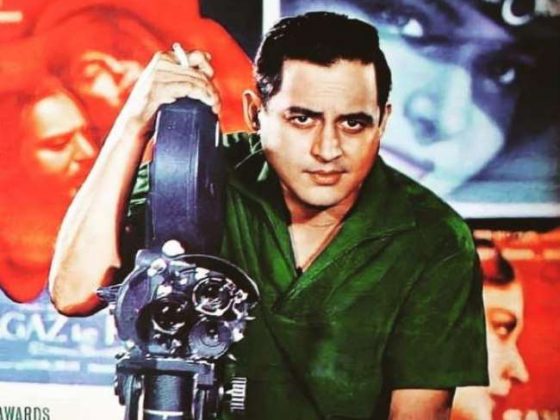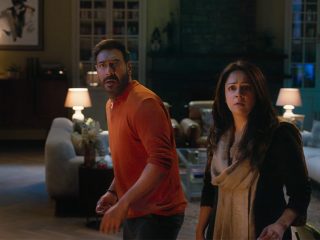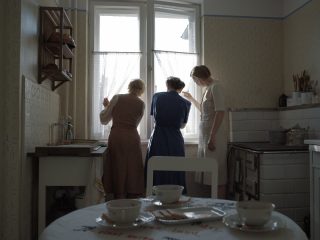If you go through the Wikipedia page of Layla and Majnun, you will be surprised to see the number of times the names of these individuals (read: fictional characters) have appeared in pop culture over the years. These individuals and their romance has been re-imagined in multiple ways only to evoke one theme – a throbbing desire to be with one another (often confused with love) and the impossibility of its actualization due to socio-cultural factors. That way, the story of Lailaa-Majnunn is as much a story about star-crossed lovers as it is about the prevalent societal dogma that keeps individuals from loving one another freely. Kamya N’s almost feature-length short, ‘Lailaa Manju’, takes this age-old evocation a step further. In this short, Lailaa and Manju are two young Indian adults who identify as queer, and they are in love! This is perhaps the best way to reclaim a heteronormative pop-culture sensation, and I could not be happier at the choice of subtext.
However, right from the start, Kamya N’s directorial lens turns away from the relationship between Lailaa and Manju to focus on the mother-daughter bond shared between Manju and their mother instead. The young lovers are happy, even a little silly, and in love; having been friends for so long now, even if they fall out, we know that they will bounce back – big deal! However, it is the bond that Manju shares with their mother that draws our attention towards the queer anxiety of coming out of the closet. Manju’s mother has seen them snuggling in bed together, so Lailaa thinks it is time for Manju to come out. Only, Manju isn’t ready yet. The film takes us through the psychological rite of passage that a queer individual, Manju, will go through, navigating the feelings of angst, shame, and social stigma, to arrive at this important juncture in their lives. Although Manju is seen making an effort, trying to come to a closure about their sexual identity via art, it takes them a while to make up their mind about coming out. The resistance Manju is up against is their mother, who clearly tells them that they are too young and naive to know what they are doing with their lives currently. Coming out of the closet risks putting Manju’s relationship with their mother at a crossroads; it is equivalent to a life-altering risk. Lailaa Manju encapsulates this anxiety neatly within its runtime.
The backdrop of the recent coronavirus pandemic is perfect to make the audience feel like their story is rooted in reality. The short also subtly focuses on the temporality of life through this setting and a poignant scene towards the end where a building caretaker sweeps away the flowers (and any trace of death) that may have been left behind after a corpse is carried away. It makes one think of the great sadnesses that are constantly a part of our lives and whether or not one should hold on to the little fragments of happiness that grace one’s journey, even if it means embracing a queer relationship or the freedom from a caregiver’s responsibilities.
Manju’s father is seen busy repairing a small table fan for the better part of the short. He is so preoccupied with it that he doesn’t rest until he gets it to function again. He is the patriarch of the family, its singular earning member, who perhaps believes that his wife is only a tea-preparing machine. Does the fan symbolise the recurring patterns of marginalisation that women face in a patriarchy? It is possible. Manju’s mother, we find, suffers from the several-minute microaggressions that patriarchy imposes upon its women. She is a victim of it, and shall inadvertently try to bring Manju round to the same systemic oppression. Manju’s coming out also becomes a necessary evil, one that can create a chink in this cycle.
The end credits start rolling just when a mysterious, but satisfied, smile lights up Manju’s mother, and we are left to wonder if Manju actually gets to come out of the closet and the vast possibilities of that outcome. Shot through a female gaze, Lailaa Manju not only pushes the love between its titular characters to the background but also makes it the ground that sheds light upon a queer person’s anxieties and experiences in a hetero-patriarchal family. It doesn’t throb with the pangs of passion, only the lilting melody of a silly best-friendship turned into a more meaningful companionship.











